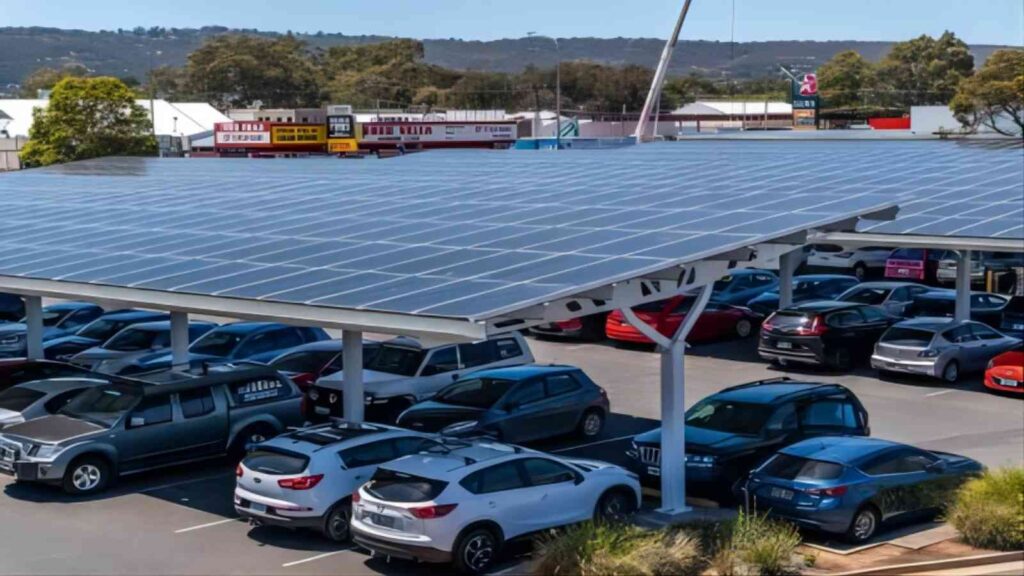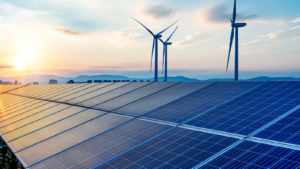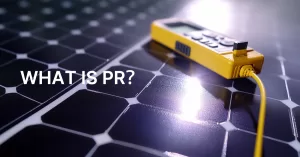Table of Contents
What is a bifacial solar panel?
A bifacial solar panel is a type of solar module that is designed to capture sunlight on both the front and rear sides. Unlike traditional monofacial solar panels that only have a single-sided photovoltaic surface, bifacial panels have photovoltaic cells on both the front and back sides, allowing them to generate electricity from sunlight striking either side.
Bifacial solar panels can capture sunlight that is directly hitting the front side as well as reflected sunlight from the ground or nearby surfaces. This feature increases their efficiency, as they can harness additional sunlight, especially in environments with reflective surfaces like snow, water, or light-colored ground.

What are the types of bifacial solar panels?
Bifacial panels come in three different forms:
1.Glass/glass: Bifacial panels with double-sided glass surfaces are structurally stronger and can resist heavier loads than other bifacial or monofacial solar panels.
2.Glass/transparent backsheet: Has a front side encased with glass while the rear is protected by a transparent backsheet. Typically, more affordable than glass/glass panel.
3.Glass/backsheet: Similar to its bifacial counterparts , it has a glass front-side and a non-transparent backsheet on the back.
Maysun’s HJT is a glass-glass bifacial solar panel,weather, corrosion and abrasion resistant double sided glass. Utilizes POE encapsulation, giving the solar panel a 30 year product and performance warranty.
Why is HJT solar panel the best choice for bifacial solar panels?
1. High-efficiency cells With the high-efficiency HJT 210mm solar cell, the TCO film increases the photovoltaic conversion efficiency by 25% by effectively passivating the interfacial defects between crystalline silicon and doped amorphous silicon. This innovative technology has had a significant positive impact on cell performance, effectively improving the energy conversion efficiency of solar cells.
2.High Bifaciality. The HJT cell utilizes a symmetrical front and back side structure to enable a backside power generation efficiency of over 95%. Compared to the Perc and Topcon technologies, the HJT cell realizes a significant gain in backside power generation of more than 30%. This innovative design allows the HJT cell to more efficiently utilize the ambient light energy resources, providing a sizable increase in solar cell performance.
What are the advantages of bifacial solar panels?
1.Maximize Land Use & Enhanced Efficiency: Bifacial solar panels are designed to maximize land use and enhance efficiency. These panels efficiently capture more sunlight within the same area, increasing the energy capacity significantly. Maysun Solar’s HJT bifacial double-glass solar panels stand out with a 30% higher rear-side energy gain compared to PERC and TOPCon technologies, and the the rear-side electricity utilization rate of HJT solar panels exceeds 95%. This combination of maximizing energy yield and efficiency is especially beneficial in space-limited solar projects.
2.Climate Adaptability: Bifacial panels excel in various climatic conditions, adapting to both high and low temperatures and seasonal changes, making them reliable for power generation in diverse weather conditions.
3.Longer Generation Window: These panels extend the power generation window by capturing light from both the front and the back. This capability allows them to generate power continuously throughout the day and under different lighting conditions, including in low-light scenarios.
4.Increased System Capacity Factor: By harnessing sunlight effectively at various times of the day, bifacial solar panels improve the system capacity factor. This leads to maximized overall efficiency of the power plant and contributes to a lower Levelized Cost of Energy (LCOE).
What are the Applicable Installation Scenarios for Bifacial Solar Panels?
1.Large-scale terrestrial photovoltaic power plants: In large-scale terrestrial photovoltaic power plants, bifacial solar panels show their excellent performance. By fully utilizing the sunlight reflected from the ground, especially in areas with high ground reflectivity, such as sand or white cover, bifacial panels are more effective. This allows large ground-mounted PV plants to capture sunlight more efficiently, increasing overall energy production.

2.Commercial Rooftop Systems: Bifacial solar panels are an ideal choice for commercial buildings with sufficient roof space. They maximize the use of reflected sunlight from the roof, especially if the roofing material is highly reflective. Commercial roof systems can be deployed to effectively increase the energy collection efficiency of solar panels and provide renewable energy support for commercial buildings.

3.Parking Lot Awnings: Installing bifacial solar panels on parking lot awnings not only provides the necessary shade for the parking area, but also captures sunlight from both the top and bottom at the same time. This innovative design not only improves the environment of the parking lot, but also increases energy efficiency and enables a sustainable energy supply.

4.Agricultural photovoltaic: The application of bifacial solar panels is not only limited to the energy industry, but can also be combined with agriculture to form an agro-photovoltaic system. By installing bifacial panels above farmland, the dual use of agriculture and photovoltaic power generation is realized. Crops under the solar panels can benefit from the sunlight that passes through the panels, while the panels capture the reflected sunlight, realizing the efficient use of resources.

5.Floating Solar System: Deploying a floating solar system on a body of water, i.e., installing double-sided solar panels on the water surface, can effectively enhance power generation efficiency. By utilizing the reflected light from the water surface, this system not only achieves double capture of sunlight, but also has a certain protective effect on the water body, providing an innovative solution for sustainable energy development.

6.Vertical Installations in Urban Areas: In dense urban spaces where area is limited, bifacial panels can be installed vertically on various structures to efficiently utilize space and capture sunlight from both sides. Examples include integrating panels into building facades, sound barriers along highways, structures of urban transit stations like bus and subway stations, pedestrian bridges and overpasses, as well as in parks and recreational areas.

7.High Latitude Regions: In regions with low sun angles, such as near the poles, bifacial panels can be more effective than traditional panels. They can capture direct sunlight on the front side and reflected sunlight from snow or other surfaces on the back side.

In all these scenarios, bifacial solar panels offer a distinct advantage by utilizing their dual-sided design to capture more sunlight and generate more energy than traditional single-sided panels. This makes them a versatile and efficient choice for a wide range of solar energy applications.
Since 2008, Maysun Solar has been dedicated to producing high-quality photovoltaic modules that contribute to combating climate change. Our advanced technology in IBC, HJT, TOPCon, and balcony solar panels ensures exceptional performance and reliability, capable of withstanding harsh weather conditions for long-term operation. We have established offices and warehouses in multiple countries and built lasting partnerships with top installers to provide comprehensive support. For the latest quotes or any inquiries related to photovoltaics, feel free to reach out to us—we’re here to help!

What are the Standard Sizes of Solar Photovoltaic Panels?
This article covers the standard sizes of solar photovoltaic panels and explains how to determine how many panels your solar system needs. It also helps estimate the system’s capacity, annual energy production, and potential savings.

What’s New in Solar Energy (December 2024)
Electricity prices in Belgium, France, and Italy hit 2024 highs. The EU introduces new battery regulations. A record 25.7% efficiency for perovskite-organic tandem solar cells was achieved. France mandates solar panels on large parking lots by 2026-2028. Polysilicon prices drop amid weak demand.

Solar Energy Made Easy: How to Connect Your PV System to the Grid
Learn how to connect your solar PV system to the national grid with this step-by-step guide. Discover the key requirements, costs, and timelines for a smooth and efficient grid connection process. Start harnessing clean energy today with Maysun Solar’s high-quality photovoltaic modules.

Solar Glare: Why IBC Solar Panels Are the Best Choice for Glare Reduction?
Discover why IBC solar modules feature anti-glare properties and explore how their unique design and technology effectively reduce light reflection, providing more efficient, safe, and environmentally friendly solar energy solutions.

Transparent Solar Panels: The Perfect Collision of Energy and Aesthetics
Transparent solar modules combine photovoltaic functionality with architectural aesthetics, widely used in carports and greenhouses. Although their performance is slightly lower, their high durability and innovative design make them an ideal choice for future building energy solutions.

Performance Ratio: Do You Know How to Calculate It?
System efficiency is an important indicator for evaluating the performance of photovoltaic power systems. Learn how to calculate system efficiency, the factors influencing it, and methods to improve it, helping optimize solar power generation.




